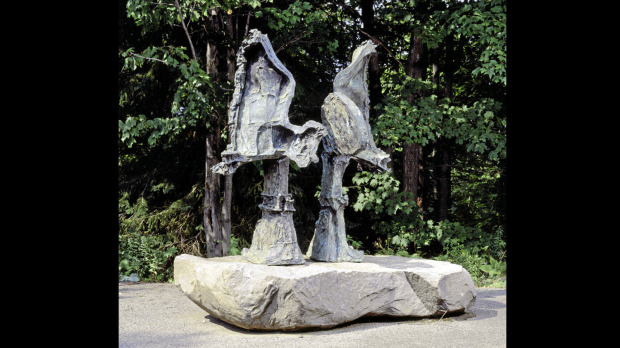 |
| El Códice Calixtino |
Editor's note: The ARCA blog received this submitted post in Spanish and decided to publish it as we're an international blog.
by Juan José Prieto Gutiérrez. Ph.D, Complutense University of Madrid.
El Códice Calixtino del siglo XII, considerado una de las joyas del Patrimonio Bibliográfico y Documental gallego, desapareció misteriosamente el pasado 5 de julio de la Catedral de Santiago de Compostela. La obra, que recoge la tradición de las peregrinaciones y la Ruta Jacobea, estaba custodiada en el Archivo catedralicio.
El manuscrito forma parte de una colección de sermones y textos litúrgicos y sirvió como una especie de guía para el mundialmente conocido Camino de Santiago, el cual se remonta a la Edad Media.
Las primeras investigaciones relatan que no existen "signos de violencia", pese a que el Códice se encontraba en unas dependencias privadas de acceso restringido y vetadas tanto a los investigadores como al público general (sólo tres personas tenían acceso directo a la sala donde se custodiaba el manuscrito; el propio deán y archivero y sus dos colaboradores, uno que trabaja por la mañana y otro durante la tarde.
Cabe destacar, que el libro se enseñaba en muy contadas ocasiones, de hecho, los investigadores trabajaban con la edición facsímil que se realizó hace unos años. Solo se podía ver en circunstancias muy concretas, y siempre en presencia de un responsable del archivo. Hace 18 años que no se exhibe fuera del archivo.
Por lo que en un principio se barajado la posibilidad de “venganza” o el hecho de dar a conocer a la sociedad los bajos índices de seguridad que rodean a los archivos y bibliotecas en España.
Falta de seguridad en Santiago: Las primeras investigaciones realizadas generan enormes fallos de seguridad:
1. La llave de la cámara de seguridad donde se custodiaba el libro estaba habitualmente puesta.
2. Las cámaras de seguridad solamente están instaladas en el claustro de la catedral, no en la zona donde se encuentran las joyas bibliográficas.
Ante estos hechos, cada vez se inclina más la balanza de que el robo se haya producido por personal del centro, de la propia Catedral de Santiago, la cual suma cerca de 70 personas. La regla general es que entre el 60% y 70% de las desapariciones en bibliotecas y archivos son producidas por personal de la casa o están involucrados.
Durante las primeras semanas se esperaba la devolución del material bajo secreto de confesión. Teniendo en cuenta una llamada anónima que habló expresamente de devolver el manuscrito. Pero este hecho pierde credibilidad día a día.
Realidad: La alarma social suele durar de 10 a 20 días. Se revisan las medidas de seguridad, se hacen algunos seguros, o se revisan las pólizas... y después, todo vuelve a ser como antes, por desgracia, hasta el siguiente suceso.
Las legislaciones españolas no inciden en los planes de seguridad concretos que se deben poner en marcha con el fin de custodiar Patrimonio de estas características.
Teniendo en cuenta que el arte religioso es "muy demandado en el mercado mundial de coleccionistas" y que el patrimonio bibliográfico es fácil transportarlo sin levantar sospechas, se confía a la colaboración policial internacional para localizar el manuscrito.
España es de los países mas azotados por los robos en bibliotecas en los últimos años, en el año 2007 se descubrió la desaparición de más de 100 documentos históricos en la Biblioteca del Ministerio de Exteriores, en 2008 se detiene a Cesar Gómez Rivero, autor del robo de la Biblioteca Nacional Española, en verano de 2009 se detiene Zslot Vamos con 67 documentos, faltando por recuperar 53.
Y ante este desgraciado hecho, volvemos a preguntarnos:
1. ¿Cuando se van a tomar en serio las medidas de seguridad en los espacios donde se custodia Patrimonio bibliográfico y documental?
2. ¿Cuando se va a instruir adecuadamente a bibliotecarios y archiveros?
3. ¿La cooperación nacional e internacional dará sus frutos?, etc.
 Anthony Amore,BBC Radio Four,Goya,Isabella Stewart Gardner Museum,Mona Lisa,Noah Charney,Turner
Anthony Amore,BBC Radio Four,Goya,Isabella Stewart Gardner Museum,Mona Lisa,Noah Charney,Turner
 No comments
No comments
 Anthony Amore,BBC Radio Four,Goya,Isabella Stewart Gardner Museum,Mona Lisa,Noah Charney,Turner
Anthony Amore,BBC Radio Four,Goya,Isabella Stewart Gardner Museum,Mona Lisa,Noah Charney,Turner
 No comments
No comments









